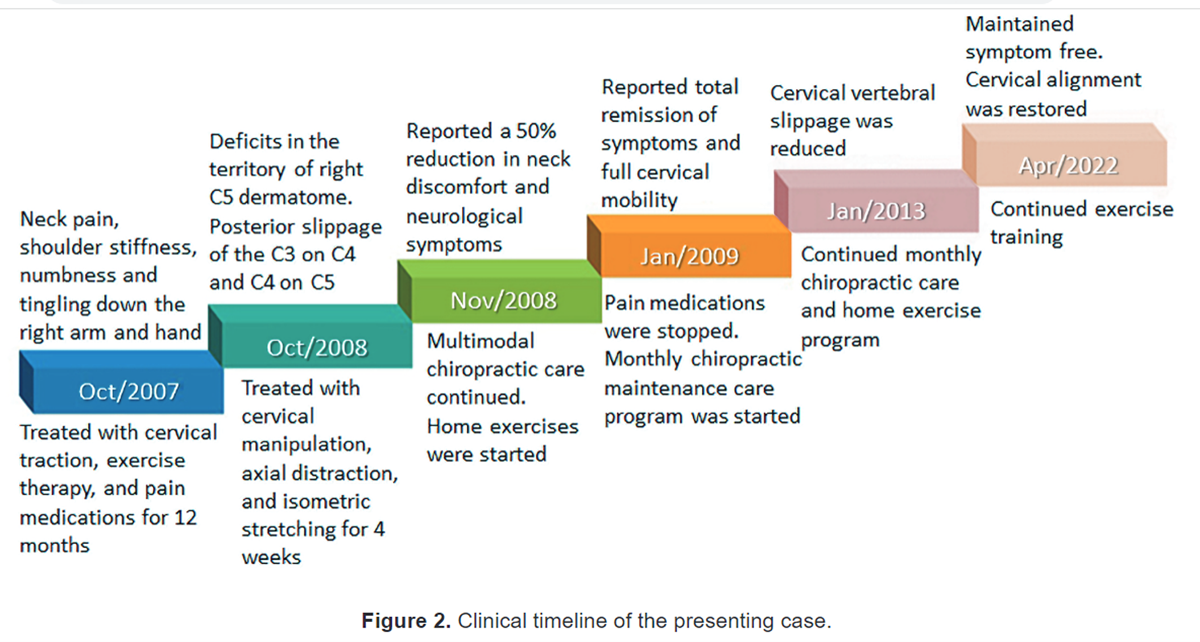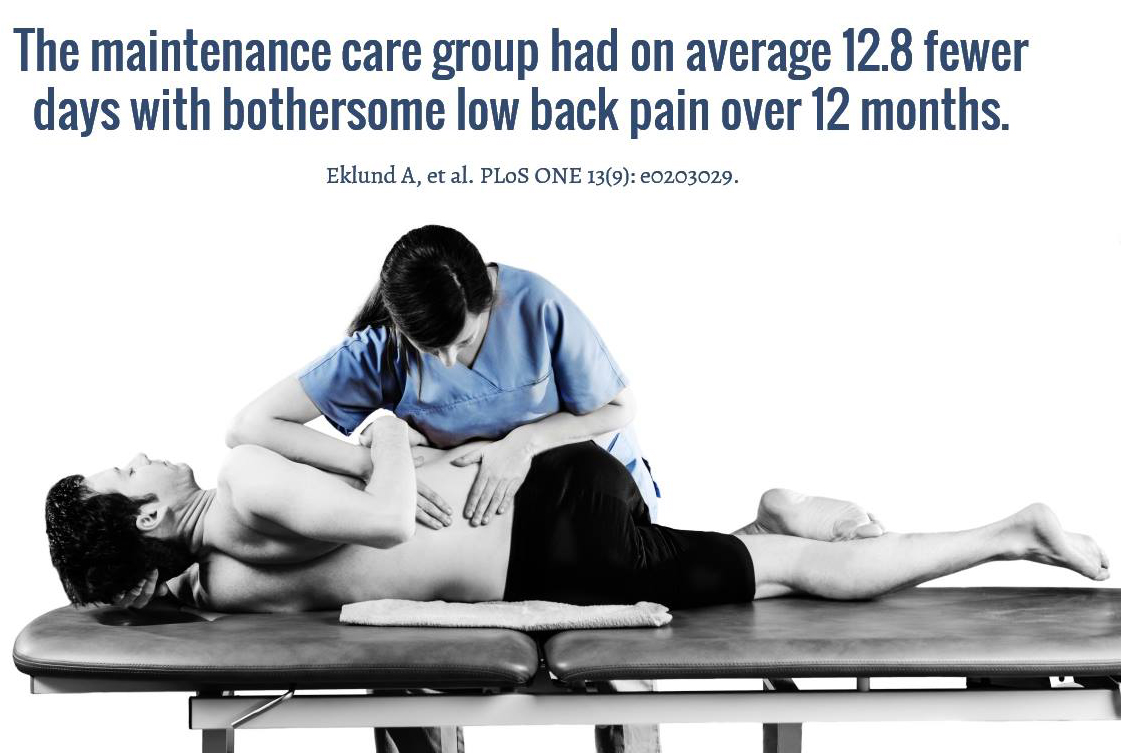The Impact of Chiropractic Care On Health
Why Maintenance Care Makes Sense
SOURCE: A Chiro.Org Editorial
Coulter and researchers at the RAND Corporation [1] performed an analysis of an insurance database, comparing persons receiving chiropractic care with non-chiropractic patients. The study consisted of senior citizens >75 years of age.
Recipients of chiropractic care reported better overall health, spent fewer days in hospitals and nursing homes, used fewer prescription drugs, and were more active than the non-chiropractic patients.
As part of a comprehensive geriatric assessment program, the RAND Corporation studied a subpopulation of patients who were under chiropractic care compared to those who were not and found that the individuals under continuing chiropractic care were:
- Free from the use of a nursing home [95.7% vs 80.8%];
- Free from hospitalizations for the past 23 years [73.9% vs 52.4%];
- More likely to report a better health status;
- More likely to exercise vigorously;
- More likely to be mobile in the community [69.6% vs 46.8%].
Although it is impossible to clearly establish causality, it is also reasonably clear that continuing chiropractic care is among the attributes of the cohort of patients experiencing substantially fewer costly healthcare interventions.
There are many more articles like this @ our:
In another study, Van Breda et al [2] interviewed 200 pediatricians and 200 chiropractors, to determine what, if any, differences were to be found in the health status of their respective children, since their families were being raised under 2 very different health care models.
Read the rest of this Full Text article now!





Great article. The disability stats are very helpful.
Amazing how many Work Comp case managers in my state are so quick to ship out injured workers to Orthopedists. If they only knew this…. One I will be sharing for sure. Thanks for the info!
Dr. Wilhelm,
A lot depends upon the wording of your State laws regarding WC claims.
In IL, patients have the right to select up to 2 different doctors, without pre-approval. If the first doesn’t work out, they can select a second. After that, the WC case manager gains full control of what happens next.
If either doctor refers them, that still counts as the one doctor, since the referee is under the control of the primary (the referring doctor).
This protects the worker from mis-management by the bean counter.
We used to have a better system of “Choose your own Doctor” in Montana, until new guidelines were adopted two years ago. Worked into that, was great latitude on the part of the claims examiners to step in and change the treating physician. This can now happen after just one treatment. A true case of the pendulum swinging the wrong way. But we just keep fighting the good fight! This kind of information is very helpful in educating where we can.
Dr. Wilhelm
I have collected numerous Cost Effectiveness studies on our site, and your State Association should gather them and make a stand. Chiropractic (as you well know) is both more effective and less costly than medical management, and in the case of Worker-related injury, can save as much as 1000% in costs, because we get them back to work a LOT faster.
http://www.chiro.org/LINKS/Cost_Effectiveness.shtml
Every study of note is listed here.
Thanks for sharing these details!
This information will also help your readers to learn more about the importance of chiropractic care.